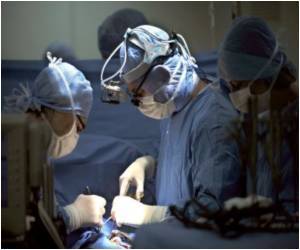Using data from the National Cancer Data Base, a major new study details the impact of annual hospital volume on 30 and 90-day mortality rates.

Lung cancer is the leading cause of death from cancer in both men and women in the U.S. The best chance to cure lung cancer after it develops involves a combination of early detection at an "operable" stage, followed by surgery to remove the portion of the lung where the cancer developed. The number of operations for lung cancer is likely to increase with lung cancer screening.
The study used the National Cancer Data Base (NCDB) cancer treatment and outcomes database, which is a joint project co-sponsored by the American Cancer Society and the American College of Surgeons. The NCDB captures more than 80% of all new lung cancer cases treated in the U.S. each year, and evaluated data for 121,099 patients who underwent major pulmonary resection for lung cancer at more than 1,200 Commission on Cancer-accredited hospitals across the U.S. between 2007 and 2011. Survival at 30 days and 90 days after surgery and numerous risk factors for dying after the surgery were evaluated.
Analysis revealed that at all 1,200+ hospitals combined, 2.8% of patients who underwent major lung surgery (93% of which were lobectomies or bi-lobectomies) died within 30 days after their surgery during this five-year time period. This rate was lower than reported from the busiest hospitals with the highest volume of surgeries just a decade ago.
Further analysis showed that annual hospital volume of major lung operations for cancer had a significant impact on both 30-day and 90-day mortality rates. The chance of death was twice as high at hospitals where less than 10 major lung cancer resections per year were performed (3.7%), compared to mortality at the busiest hospitals performing more than 90 such operations per year (1.7%). More than 10,000 of these operations took place at these lowest volume hospitals.
The researchers were surprised that the number of deaths by 90 days after surgery climbed to 5.4% overall, nearly double the rate at 30 days. "This increase in the number of deaths between 30 days and 90 days after surgery was not expected and has not been extensively reported in the past, as mortality rates after surgery are traditionally examined at 30 days. The reasons for this ongoing mortality beyond 30 days are not yet clear, but deserve further investigation," says lead author Christopher M. Pezzi, MD, Department of Surgery, Abington Health, Abington PA. The ongoing deaths between 30 and 90 days occurred at both low volume and high volume hospitals, although remained less likely at the busiest hospitals.
Advertisement
The Commission on Cancer of the American College of Surgeons has the ability to directly report to more than 1,500 accredited hospitals in the U.S. regarding their annual volume of these operations as well as the mortality rate at their hospital compared to national data. This information is part of a new national Cancer Quality Improvement Program (CQIP), which was launched in February 2014 and will be updated annually.
Advertisement











